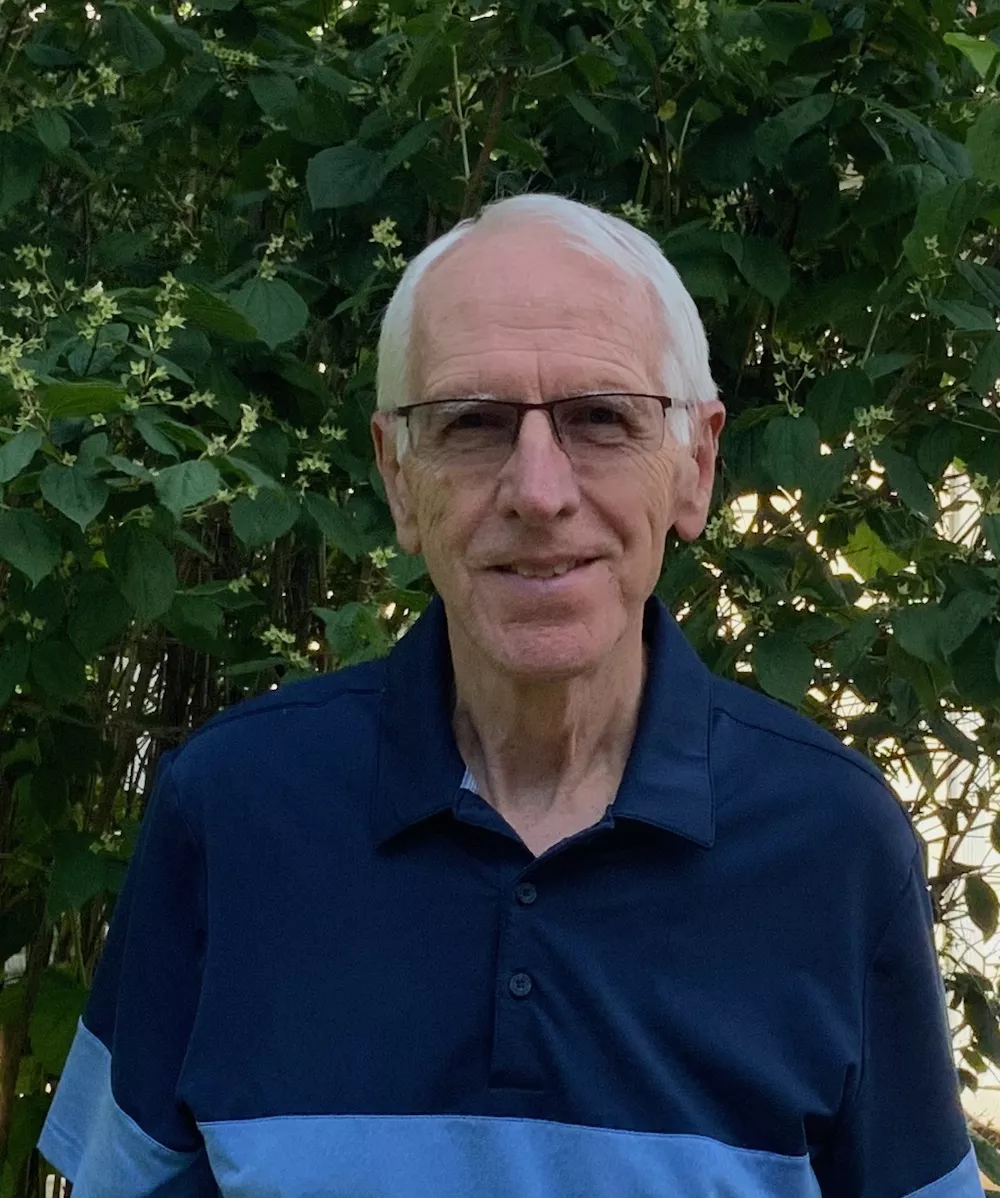Minimally invasive heart surgery keeps Jim running, biking, and living a full life at age 76

Jim Hetrick of DeWitt, Iowa, founded the local high school cross country team and coached the team for nearly 30 years. At age 76, he still loves running long distances.
Retirement gave him more time for golf and volunteering with a group that builds mountain bike trails—which led him to a new hobby: fat tire mountain biking.
When a heart valve problem made breathing difficult, Jim consulted with Mohammad Bashir, MBBS, cardiothoracic surgeon at the University of Iowa Heart and Vascular Center. Bashir performed a minimally invasive aortic valve replacement that allowed Jim to get back to the active lifestyle he loves.
“Thanks to Dr. Bashir and the team, I am back to doing the things I enjoy doing.” Jim says.
A noticeable change
At the beginning of 2021, Jim landed in his local hospital with pneumonia. His doctors found that his body wasn’t getting the proper blood flow and oxygen it needed. The culprit was a leaky aortic valve.
The aortic valve helps regulate blood flow from the heart into the aorta, the main artery that supplies blood to the body. When the aortic valve doesn’t close correctly, blood can flow back into the heart. This causes the heart to work harder. It also means other parts of the body can’t get the oxygen-rich blood they need to function.
Jim’s cardiologist referred him to Bashir. He says the hour-long trip west was more than worth it.
“Even just walking up the stairs at my house made me breathless,” Jim says. “It felt like I had just run a mile. Without the surgery referral to UI Hospitals & Clinics, I don’t think I would have lasted much longer.”
A lifesaving option
After meeting with Bashir, Jim learned he was eligible for a minimally invasive aortic valve replacement. The procedure, which involves two small incisions, would have a much faster recovery than traditional open-heart surgery.
“Jim was having a whole-body response to the leaky heart valve,” Bashir says. “That meant he was getting weaker as time went on. While we could have done the open-heart procedure, we wanted to spare him that lengthy recovery and added time in the intensive care unit.”
Jim says Bashir clearly explained every step of the process.
“I felt comfortable with him and his whole team,” Jim says. “He did an excellent job explaining everything and listening to all of my questions.”
Faster recovery for more complex patients
During a minimally invasive heart valve procedure, Bashir makes a one-inch incision near the groin to access an artery. He uses this incision to insert the heart-lung machine, which keeps blood and oxygen flowing through the body during surgery.
Bashir also makes a two-inch incision between the ribs to access the heart valve. He inserts small instruments through the incision in the chest and replaces the leaky valve with an artificial valve.
The most significant advantage of this minimally invasive process is the recovery time. While a typical open-heart procedure requires as long as 12 weeks to heal, patients who undergo minimally invasive surgery can recover in just two to four weeks.
These minimally invasive procedures are critical for cardiologists and cardiothoracic surgeons seeing patients with more complex or severe diseases.
“We need to evolve as surgeons to accommodate those complex patients by providing the least traumatic, least invasive treatment possible,” Bashir says. “By using these techniques, we hope to help complex patients get through tough times and feel better faster.”
A noticeable change—for the better
Jim knew immediately that the surgery was a success.
“As soon as I woke up from surgery, I knew I was better,” Jim says. “I could breathe.”
Bashir’s team made sure Jim had follow-up appointments with his home cardiologist. They also arranged for his cardiac rehabilitation, which he could do at a hospital near home.
“Dr. Bashir and his team handled everything for me,” Jim says. “They paid attention to all the details and made sure I had support every step of the way. Everyone took such good care of me.”
Jim knew immediately that the surgery was a success.
“As soon as I woke up from surgery, I knew I was better,” Jim says. “I could breathe.”
Bashir’s team made sure Jim had follow-up appointments with his home cardiologist. They also arranged for his cardiac rehabilitation, which he could do at a hospital near home.
“Dr. Bashir and his team handled everything for me,” Jim says. “They paid attention to all the details and made sure I had support every step of the way. Everyone took such good care of me.”
Getting back on the trail
Since his surgery in mid-March, Jim is getting back to the active lifestyle he loves. Although he had a few weeks of recovery and rest after the procedure, he could do most tasks on his own.
“I didn’t need one pain pill,” he says.
On top of his cardiac rehabilitation three times a week, Jim is jogging again and making plans to get back on the mountain bike.
“Having this surgery was such a great experience,” Jim says. “It’s helped me get back to doing what I love. If you find you need a similar surgery, look up Dr. Bashir and give him a call. He’s the guy to do it.”
Learn more about minimally invasive heart surgery at the UI Heart and Vascular Center.